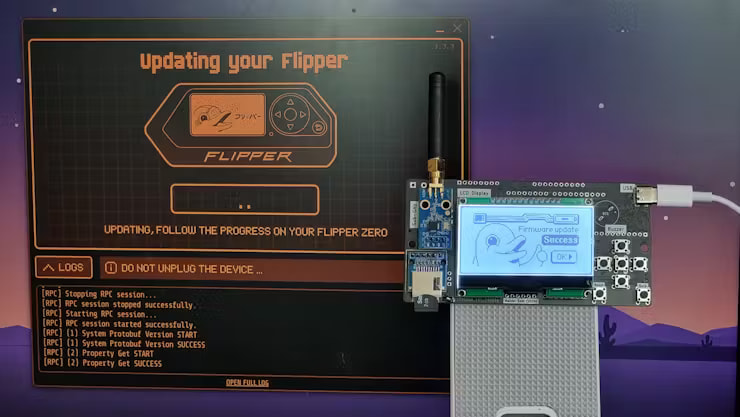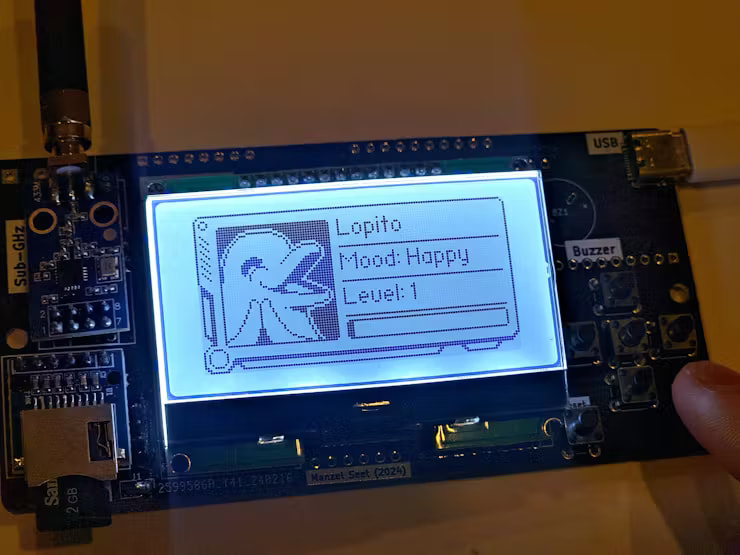
The Flipper Zero, a popular tool among hardware hackers, tinkerers, and penetration testers, has inspired the development of a new DIY alternative known as the FCFZ (Fully Compatible Flipper Zero). Designed using off-the-shelf components, the FCFZ addresses the high costs and limited availability of the original device in some regions, while maintaining compatibility with its firmware and ecosystem.
The Flipper Zero is a versatile handheld tool resembling a retro electronic toy, designed to interact with digital and physical systems for testing and educational purposes. It can read RFID and NFC tags, emit infrared signals, scan sub-GHz frequencies, and serve as a GPIO interface for external devices. A vibrant community supports the device with open-source firmware and third-party applications.
Creating an (un)faithful clone
Unlike other attempts to clone the Flipper Zero, the FCFZ avoids replicating the original’s custom PCB design. According to the project's creator, this distinction was intentional:
“Although there have been attempts by other hobbyists to make a clone of the Flipper Zero, it misaligned with my goal because of the need for custom PCB assembly. It does not make sense to replicate 1-for-1 using the same components as it will definitely be more expensive at low quantities.”
This approach leverages modular, readily available components to sidestep manufacturing challenges and reduce costs, offering a solution where acquiring the original Flipper Zero is impractical or prohibitively expensive.
While the Flipper Zero is priced competitively, its availability has been hindered by manufacturing constraints and scalping, particularly in underserved regions. Moreover, due to some people using the device for malicious purposes, its import and sale in some countries have been banned.
The device’s creators have previously emphasized that replicating it at scale is challenging due to proprietary components and manufacturing economies. As noted in a Reddit thread by the Flipper Zero team:
“Assembling the Flipper at our price point requires at least the same manufacturing scale as we do, and no one can do this.”
Building the FCFZ
The FCFZ is designed for hobbyists with moderate technical skills and focuses on using off-the-shelf modules. The creator relied on the STM32WB5MMG development board and a compatible ST7565 LCD display to ensure interoperability with the official Flipper firmware.

hackster.io
Despite omitting certain features like a rechargeable battery and RF multiplexer, the project succeeded in demonstrating compatibility with the Flipper Zero mobile app and OTA firmware updates.
The DIY assembly required compromises:
- Antenna Efficiency: Without the original sub-GHz antenna multiplexer, users must swap out separate modules for different frequencies.
- Portability: The FCFZ is larger and lacks a built-in battery.
- Limited Features: U2F functionality and full RFID compatibility are not included.
However, the cost is significantly lower, with an estimated $90 per unit, compared to inflated prices from resellers.
During development, the creator encountered challenges such as flashing the device with firmware and integrating specific hardware components. For instance, an NFC chip mismatch required a firmware modification to achieve compatibility. Similarly, the absence of factory-programmed security keys means certain advanced features, like U2F, remain inaccessible.

hackster.io
The FCFZ in its final form is not a complete replacement for the original Flipper Zero but offers a functional alternative for those unable to access the official device. This project highlights the adaptability of the Flipper Zero ecosystem and showcases how modular designs can democratize access to powerful tools.






Leave a Reply